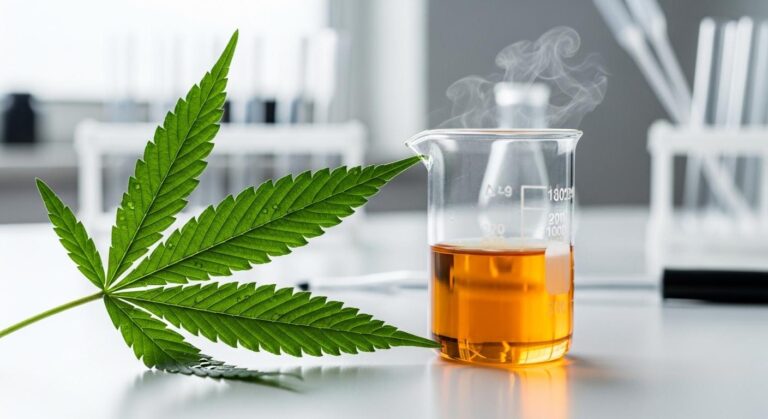Contents
Introduction to THC (Delta-9)
THC (Delta-9), the chemical superstar of cannabis, is best known for giving you that quintessential “high.” Officially known as Delta-9-tetrahydrocannabinol, it’s the compound that put cannabis on the map. In the grand family tree of chemistry, THC’s structure is like that eccentric uncle—slightly unusual yet fascinating—boasting a combination of carbon rings and hydroxyl groups that work some serious magic. First discovered in the 1960s by Israeli chemist Raphael Mechoulam, THC quickly became the cornerstone of cannabis research. It’s the cannabis plant’s agent provocateur, triggering physiological changes that are both revered and debated worldwide.
In Australia, THC’s legal status is as complex as a soap opera plot. Recreational use? Not so much, as it’s generally deemed illegal, except in the Australian Capital Territory under strict conditions. Medicinal use, however, is gaining traction, with prescriptions on the rise. Globally, the landscape is as colorful as a patchwork quilt—varying from the liberal laissez-faire of Canada to draconian penalties in some parts of Asia. But why exactly is THC the talk of the town across continents? Let’s unravel the mystery.
How THC (Delta-9) Works in the Body
Once ingested, be it through a spliff or a gummy bear, THC dives headfirst into the bloodstream and makes a beeline for the endocannabinoid system. Picture this system as a vast network of receptors scattered throughout your body like tiny WiFi routers, maintaining homeostasis. THC’s favorite dance partners are the CB1 and CB2 receptors, primarily found in the brain and immune system, respectively.
When THC binds to these receptors, it’s like flipping a switch—neurotransmitter release is altered, leading to a cascade of effects. Dopamine levels spike, producing feelings of euphoria and relaxation, while other neurotransmitters take part in altering perception and mood. However, it’s not all sunshine and rainbows. THC can tip the balance just enough to turn relaxation into anxiety in some individuals, making one’s mouth feel like a desert, or triggering paranoia when the dosage or setting isn’t quite right.
Psychoactive Effects of THC (Delta-9)
THC is the architect behind the quintessential cannabis high—a complex brew of sensations that can leave you giggling on the couch or marveling at a sunset with newfound awe. Common effects include euphoria, relaxation, and altered sensory perception—colors seem brighter, sounds richer, and time… well, time can feel like it’s on holiday.
And yet, not all experiences are created equal. While some might revel in THC’s embrace, others could unwittingly score a front-row seat to an anxiety parade, leading to racing thoughts or mild panic. Dry mouth and a voracious appetite (hello, munchies) are also usual suspects. Individual differences, prior experiences, and dosage levels play crucial roles in determining whether THC turns your day into a Monet or a Munch.
Medical Uses and Benefits
Beyond its recreational fame, THC wears a lab coat in the medical world. Chronic pain management? Check. THC’s analgesic properties are harnessed to provide relief from persistent pain conditions, offering a natural alternative to conventional medications. Moreover, its knack for stimulating appetite makes it invaluable in treating nausea and appetite loss, especially in chemotherapy patients.
But the plot thickens. Research suggests THC may alleviate certain mental health disorders, such as anxiety and PTSD, by interacting with the endocannabinoid system to help regulate mood. Yet, it’s the ongoing research and potential future applications that truly tantalize scientists. Could THC be a key player in tackling neurodegenerative diseases? Time—scientifically measured and assessed, of course—will tell.
Recreational Use and Cultural Impact
In many communities, both local and global, THC is as much a cultural icon as it is a chemical one. From reggae rhythms in Jamaica to hip-hop’s lyrical homages, cannabis use is entwined with artistic expression. Social perceptions, however, are a mixed bag. For some, THC is a symbol of counterculture and personal freedom; for others, it’s a gateway to societal decay—cue the pearl-clutching.
Yet, as legalization spreads like an inkblot on parchment, so does the conversation around responsible use and moderation. After all, with great power (or a powerful high) comes great responsibility. Ensuring safe practices while indulging can mean the difference between enlightenment and embarrassment.



